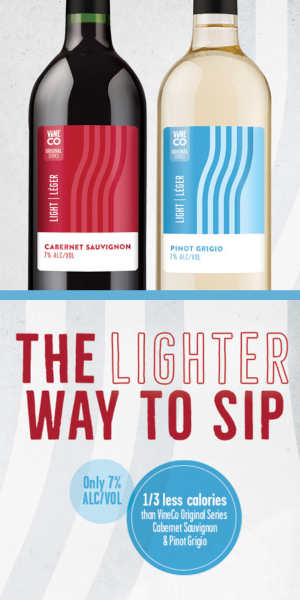Red wines are typically not fined as often as white wines, to which we often add bentonite in order to remove potentially haze-causing proteins. The tannin from the skins of red wines tends to bind with excess protein, the agglomeration of which will precipitate out during the fermentation process. Nor do we usually cold-stabilize red wines, where cold storage (often 32–35 °F/0–2 °C for a few days) and a potassium bitartrate addition precipitate excess tartrate crystals from the wine, which can look like glass shards. The bottom line is that, visually at least, red wines just hide a lot of instabilities much better than white wines and so especially for small lot producers whose wines are not widely distributed (which includes home winemakers), many of us just don’t bother with fining our reds at all. Longer storage in barrel before bottling does a lot of the work for us; we let time and gravity work their magic. Many of us tend to simply rack our red wines off the well-settled lees before bottling and call it a vintage.
However there are absolutely some instances in which fining reds can make a lot of sense. Excessive tannins, especially in varietals like Cabernet Sauvignon, Malbec, Cabernet Franc, Tannat and Petit Verdot, can be removed by adding a protein like egg whites or casein (milk protein). The added protein (the limiting reagent) will bind with available tannin until exhausted at which point the protein+tannin molecule, now with a much larger molecular weight, will come out of solution and fall to the bottom of the aging vessel as a solid. With time and gravity (and some luck, of course), this material will compact into a nice, solid lees layer from which a much clearer and less-tannic wine can be racked. Each wine will vary, but I usually allow for three weeks at the very least for a quick settle but prefer six weeks for a nice, solid settling. Adding protein to extracted, astringent wines can really help smooth out the rough edges and create a red with a rounder, more “generous” mouthfeel, in addition to creating a more visually clear (less cloudy) final product. A protein fining can make a wine ready to drink a little sooner and can even cut down on the amount of bottle aging needed to tame aggressive tannins.
Sometimes you may want to just worry about clarification of your red wines and want cloudiness to settle out. Bentonite can help here, if you happen to have some on hand, but adding egg whites or other protein finings will also help clarify. Bitterness can be helped by a bentonite and casein blend like “Bentolact S.” Astringency can often be helped by gelatins, in addition to other protein finings. If you want to avoid animal-protein (egg, casein, gelatin, isinglass) fining agents altogether, you might want to try some suspended silica preparations with vegan Alginic acid (aka alginates) sourced from algae, which does a good job of pulling out excess tannins and clarifying. Though I haven’t seen any study where someone can detect residual egg whites or milk protein in finished, fined wine (because the proteins bind with tannins and other compounds and come out of solution, then they are removed from the wine), some people choose not to use any animal-based items in their winemaking.
Though they are not exactly traditional “fining agents,” an exciting new class of mouthfeel and texture enhancers for red wines many winemakers are experimenting with are what I call “finishing tannins” but may also be called “polymerized aging tannins” in the literature. Paradoxically, sometimes adding tannin to tannin can actually enhance mouthfeel and perceived quality of red wines. They won’t help with clarity and often won’t help mask bitterness, but can give you some positive interactions. Check with your winemaking supply purveyor of choice, and also check out aebusa.com, scottlab.com and americantartaric.com for ideas of tannins to try.
For many small-lot winemakers, the classic protein for red wine fining is egg white. It’s cheap, and it is easy for everyone to find. Remember — the more egg white you add, the more tannin the protein will pull out of solution. A not-so-tannic wine that needs just a teeny bit of smoothing out probably will do well at a dose of 0.40 mLs egg white/gallon wine but a very tannic wine might need 2 mLs/gallon or even more. If you have the patience (and the ability to measure out really small volumes) try doing a bench trial on 100 mL of wine or so first, to see what you prefer.
Be forewarned; you can always add more egg if you want to pull out more tannin, but it’s tougher to put tannin back once you’ve over-fined (or stripped) your wine. Figure that your average American egg will have around 24 mL of egg white per shell. Sometimes winemakers talk about “adding one egg per barrel,” so if you use those “units,” figure that’s 24 mLs of egg white (the white yield from one egg)/59 gallons, or 0.4 mLs/gallon. I find for softer wines 0.4 mLs/gallon is great, but often I go up to 2 mLs egg white/gallon for something big and tannic.
Here is how you would employ the egg whites you do decide to use for your own batch:
1. Break your egg(s) and carefully separate the white from the yolk.
2. Measure out the number of mLs of egg white you want to use in a graduated cylinder or with a pipette and place in a small bowl.
3. Add a tiny pinch of table salt and enough water (a few mL or a little more, as needed) to make a liquid solution.
4. With a whisk or a fork, gently dissolve the egg white into the water. Do not beat too much air into the solution.
5. Dump the entire solution into your vessel and stir gently with a long stirring rod for about 30 seconds or so to make sure the liquid is distributed.
6. Leave covered (if you have headspace, gassing with CO2 or argon is always a good idea after you open a vessel) for at least three weeks to settle out.
7. Rack the wine carefully into another container, leaving any sediment on the bottom of the original container.
To answer your last question, I always recommend cross-blending varietals and lots after at least six months of aging separately, so you know what your components will give you and they’ve had a chance to “settle down” after fermentation. That being said, you want to allow enough “marrying” time before bottling to account for any instabilities that might crop up. It’s a new chemical soup after all.





